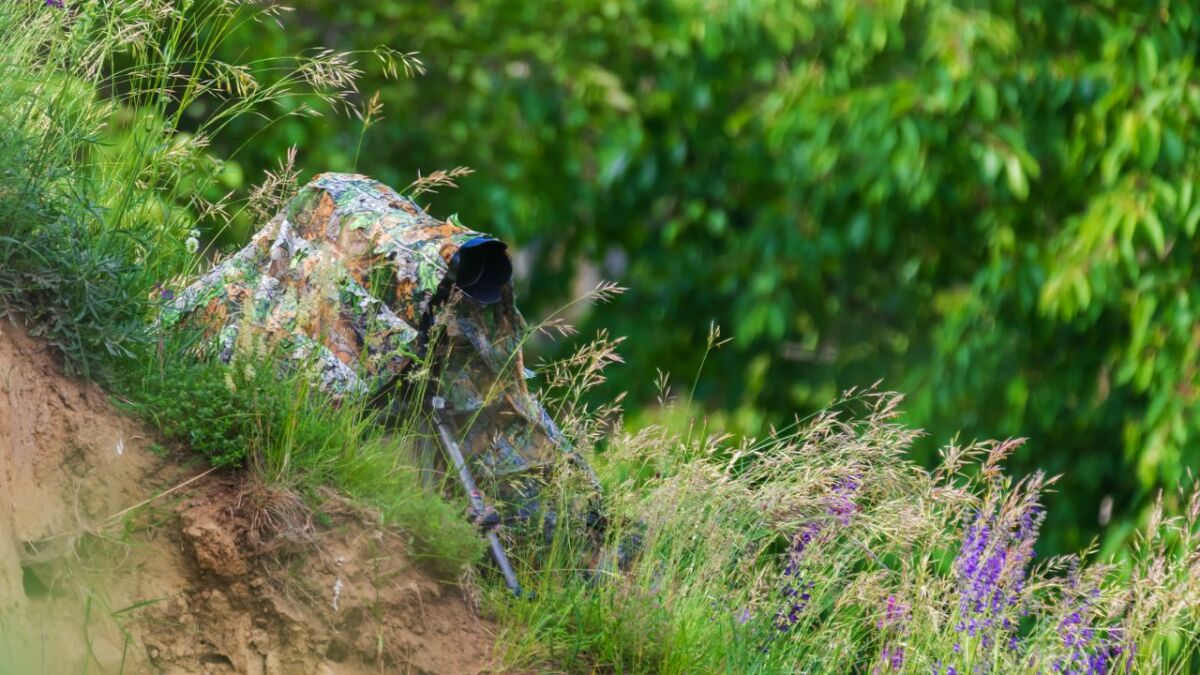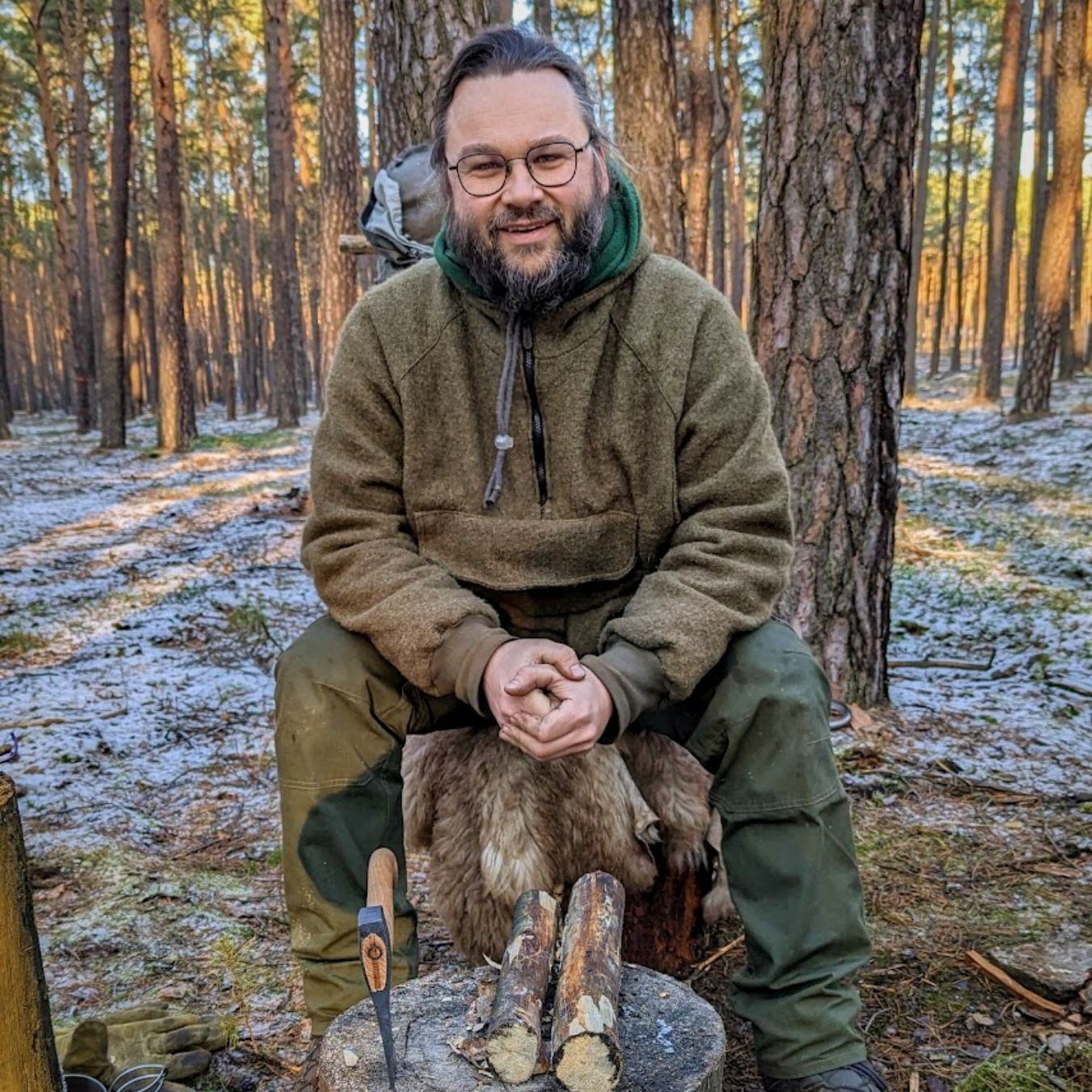
camouflage
Nomen
Meaning
Camouflage refers to the practice of blending in with one's surroundings in order to remain undetected. In the context of survival, bushcraft, wilderness, camping, and hiking, camouflage plays a crucial role in staying hidden from potential threats or predators. It involves using natural materials, such as leaves, branches, and mud, to create a disguise that matches the environment. Camouflage is essential for hunters, wildlife photographers, and outdoor enthusiasts who want to observe animals without disturbing them. Understanding how to effectively camouflage oneself can greatly increase one's chances of survival and enhance the overall outdoor experience.

Examples
„I love going out into the wilderness and practicing my bushcraft skills. One of the most important skills to have is camouflage.“
„When I'm out hunting, I always wear camouflage clothing to blend in with my surroundings and increase my chances of success.“
„During a survival situation, it's crucial to be able to camouflage your shelter to avoid detection.“
„I recently attended a bushcraft workshop where they taught us different techniques for creating natural camouflage using leaves, branches, and mud.“
„My friend and I were discussing our upcoming camping trip, and he mentioned how important it is to choose a tent with a camouflage pattern to stay hidden from wildlife.“
Origin
The word "camouflage" originates from the French word "camoufler," which means "to disguise." It was first used in the late 19th century to describe the practice of concealing military equipment and personnel to blend in with their surroundings and avoid detection.
The concept of camouflage, however, predates the term itself. Throughout history, armies and hunters have employed various techniques to blend into their environment, such as using natural materials like leaves and branches to create makeshift hiding spots.
During World War I, camouflage became a crucial strategy on the battlefield. Artists and designers were enlisted to develop patterns and colors that would help soldiers blend into their surroundings, making it harder for the enemy to spot them. This led to the development of camouflage uniforms, vehicles, and even aircraft.
Over time, camouflage has evolved beyond military applications. It has found its way into fashion, outdoor gear, and even everyday objects. The patterns and colors used in camouflage designs have become iconic and recognizable, often associated with adventure, survival, and the great outdoors.
Synonyms
Disguise, Concealment, Hiding, Blending in, Masquerade, Cover, Stealth, Deception
Antonyms
Visible, Exposed, Conspicuous, Noticeable, Prominent, Obvious, Clear, Distinct
Relatives
Camo, Concealment, Blending in, Disguise, Hiding, Stealth, Deception, Mimicry
Historical and cultural importance
Camouflage has a rich historical and cultural significance, particularly in the context of military tactics and fashion. The word itself originates from the French word "camoufler," meaning "to disguise."
In military history, camouflage has played a crucial role in concealing soldiers, equipment, and vehicles from enemy detection. During World War I, both sides developed intricate camouflage patterns to blend in with their surroundings and avoid being spotted by enemy snipers or reconnaissance aircraft. This led to the development of specialized camouflage units and techniques, such as the use of natural materials like leaves and branches to create effective hiding spots.
Outside of the military, camouflage has also made its mark in the world of fashion and design. The distinctive patterns and colors associated with camouflage have been adopted by various subcultures, including hunters, outdoor enthusiasts, and streetwear fashion. Camouflage clothing and accessories have become popular symbols of ruggedness, adventure, and rebellion.
Furthermore, camouflage has influenced other areas of design and art. The concept of blending in with one's environment has been explored in architecture, interior design, and even digital media. The idea of using patterns and colors to create optical illusions and disrupt visual perception has become a fascinating subject for artists and designers alike.
Overall, camouflage holds a significant place in history and culture, representing both practical military strategies and artistic expressions of blending in or standing out.
More information about the term camouflage
Camouflage: Blending in with Nature
Camouflage is a crucial skill for any survivalist or outdoor enthusiast. It involves blending in with your surroundings to remain undetected by both prey and predators. Whether you're hunting, observing wildlife, or trying to evade danger, mastering the art of camouflage can greatly increase your chances of success.
The Importance of Camouflage
Camouflage serves two main purposes: concealment and deception. By blending in with your environment, you become less visible to animals and humans alike. This allows you to move silently and unnoticed, giving you a tactical advantage in the wild. Additionally, camouflage can help you deceive your prey or predators by mimicking natural elements, such as foliage or rocks.
When it comes to survival situations, camouflage can be a matter of life and death. It allows you to hide from potential threats, increasing your chances of survival. Whether you're trying to avoid dangerous animals or evade hostile humans, being able to disappear into your surroundings can be a game-changer.
Choosing the Right Camouflage
Effective camouflage depends on several factors, including the environment you're in and the time of year. Different terrains and seasons require different camouflage patterns. For example, if you're in a dense forest, you'll want a camouflage pattern that mimics the colors and textures of leaves and branches. In contrast, if you're in a snowy landscape, a white or gray camouflage pattern will be more effective.
It's also important to consider the specific purpose of your camouflage. Are you trying to blend in while hunting, observing wildlife, or hiding from potential threats? Each scenario may require a different approach. For hunting, you'll want a camouflage pattern that matches the natural colors of your prey's habitat. If you're observing wildlife, you'll want a pattern that mimics the surroundings without alarming the animals.
Camouflage Techniques
Mastering camouflage involves more than just wearing the right patterned clothing. It requires a combination of clothing, body positioning, and movement techniques. Here are a few techniques to help you blend in with your surroundings:
- Choose clothing that matches the colors and textures of your environment.
- Use natural materials, such as leaves or branches, to break up your silhouette.
- Move slowly and deliberately, mimicking the natural movements of the environment.
- Use shadows and natural cover to your advantage.
- Avoid sudden movements or bright colors that may give away your presence.
Remember, effective camouflage requires practice and attention to detail. Take the time to study your environment and experiment with different techniques to find what works best for you.
Conclusion
Camouflage is an essential skill for survivalists and outdoor enthusiasts. By blending in with your surroundings, you can remain undetected and increase your chances of success in various situations. Whether you're hunting, observing wildlife, or evading danger, mastering the art of camouflage can be a game-changer. Remember to choose the right camouflage pattern for your environment, and practice different techniques to perfect your skills. With camouflage, you can become one with nature and unlock new possibilities in the wild.
Back to overview

